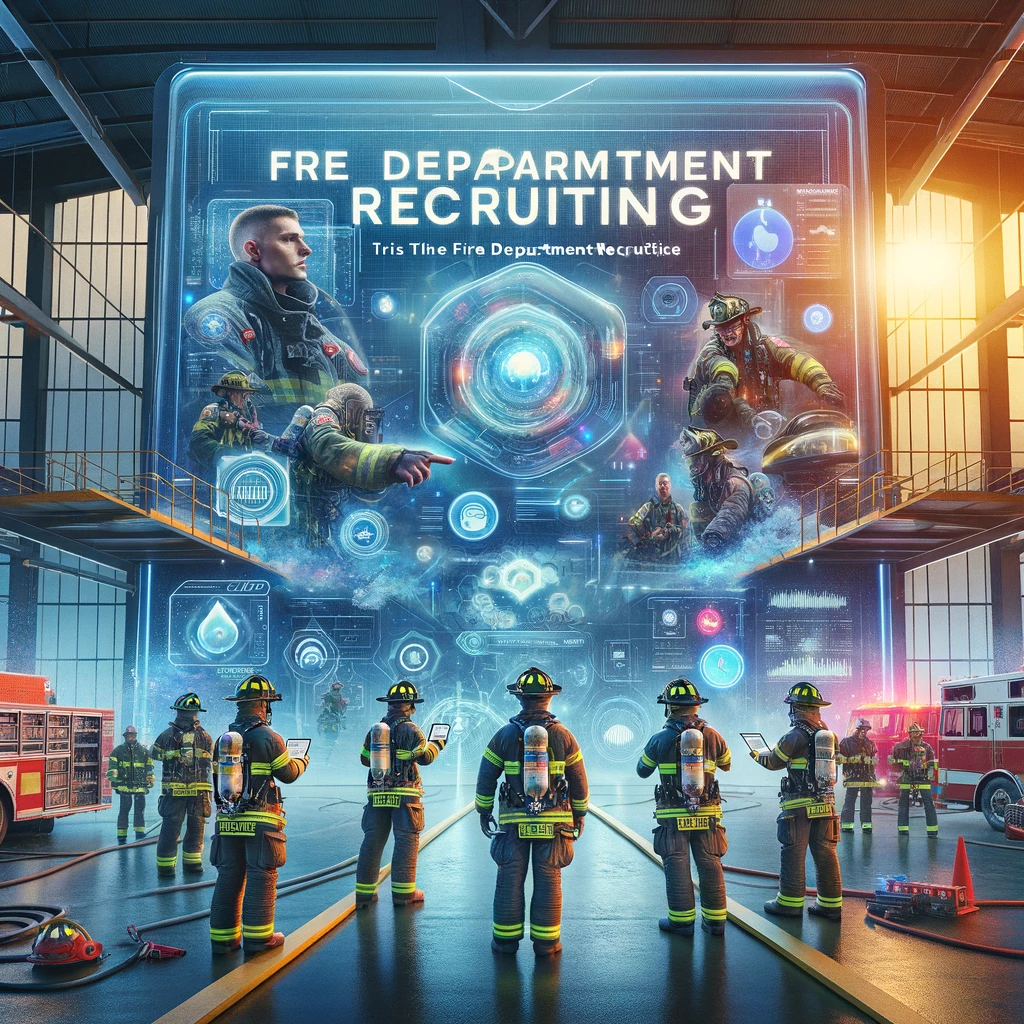Enhancing the Recruitment Journey: Strategies for Improving Fire Department Recruiting
Fire department recruiting is a multifaceted process that plays a critical role in building and sustaining a skilled, diverse, and dedicated workforce of firefighters. However, like any recruitment endeavor, the journey for both candidates and departments alike can be complex, challenging, and sometimes inefficient. In this blog post, we’ll explore strategies and best practices to make the recruitment journey better in fire department recruiting. From enhancing candidate experience to optimizing recruitment processes, these insights aim to streamline the journey for all involved parties, ultimately leading to more successful outcomes and stronger fire departments.
Understanding the Challenges:
Before delving into solutions, it’s crucial to understand the challenges that both candidates and fire departments face throughout the recruitment journey. These challenges may include:
- Limited Awareness: Prospective candidates may lack awareness of fire department recruitment opportunities or may struggle to find relevant information about the process.
- Lengthy Processes: Recruitment processes can be lengthy and time-consuming, leading to delays in filling vacant positions and adding strain to department resources.
- Inefficient Communication: Poor communication between candidates and departments can lead to frustration, confusion, and missed opportunities for engagement.
- Bias and Inequity: Unconscious bias or systemic barriers may impact the recruitment process, leading to disparities in candidate selection and representation within fire departments.
- Limited Resources: Fire departments may face constraints in terms of staffing, budget, and technology, limiting their ability to execute efficient and effective recruitment strategies.
Strategies for Improvement:
- Enhance Outreach and Awareness:
- Utilize a variety of channels to promote recruitment opportunities, including social media, community events, job fairs, and local outreach initiatives.
- Develop informative and engaging content, such as videos, testimonials, and blog posts, to educate potential candidates about the rewards and requirements of firefighting careers.
- Partner with schools, colleges, and community organizations to reach diverse and underrepresented populations and foster interest in firefighting careers from an early age.
- Simplify and Streamline Processes:
- Review and streamline recruitment processes to minimize unnecessary steps, paperwork, and administrative burdens for both candidates and department personnel.
- Leverage technology solutions, such as applicant tracking systems (ATS), online applications, and digital assessments, to automate repetitive tasks and improve efficiency.
- Provide clear guidance and resources to candidates at each stage of the recruitment journey, including application instructions, FAQs, and timelines for follow-up communication.
- Improve Communication and Engagement:
- Establish clear and transparent communication channels for candidates to ask questions, seek clarification, and receive updates throughout the recruitment process.
- Implement regular touchpoints or status updates to keep candidates informed of their progress, next steps, and any changes to the recruitment timeline.
- Solicit feedback from candidates about their experience during the recruitment process and use this feedback to identify areas for improvement and make necessary adjustments.
- Address Bias and Promote Equity:
- Provide training and education to recruitment personnel on unconscious bias, diversity, equity, and inclusion to ensure fair and equitable treatment of all candidates.
- Implement standardized assessment criteria and evaluation processes to minimize the influence of subjective biases and promote merit-based selection of candidates.
- Proactively monitor recruitment data and outcomes to identify disparities or patterns of inequity and take corrective action to address systemic barriers or biases.
- Invest in Resources and Support:
- Allocate sufficient resources, including staffing, budget, and technology, to support recruitment efforts and ensure the success of outreach initiatives and candidate engagement activities.
- Provide comprehensive support and guidance to candidates throughout the recruitment journey, including access to resources, mentorship programs, and networking opportunities.
- Foster a positive and supportive recruitment culture within the department, emphasizing the value of diversity, inclusivity, and collaboration in building a strong and resilient workforce.
Case Studies: Successful Strategies in Action
Let’s explore two case studies highlighting successful strategies for improving the recruitment journey in fire department recruiting:
Case Study 1: Streamlining Processes with Technology
- Challenge: A fire department faced lengthy delays and administrative burdens in processing applications and scheduling assessments for firefighter candidates.
- Solution: The department implemented an online application portal and applicant tracking system (ATS) to automate application submissions, document management, and scheduling of assessments.
- Results: The streamlined processes led to significant time savings for both candidates and department personnel, reduced administrative overhead, and improved overall efficiency in the recruitment process.
Case Study 2: Promoting Equity and Inclusion
- Challenge: A fire department recognized disparities in the representation of women and minority candidates within its workforce and sought to address systemic barriers to recruitment and advancement.
- Solution: The department implemented diversity and inclusion training for recruitment personnel, standardized assessment criteria, and targeted outreach initiatives to underrepresented communities.
- Results: The department saw an increase in the diversity of its candidate pool, with more women and minority candidates participating in recruitment activities and advancing through the selection process. The department also received positive feedback from candidates about the inclusive and welcoming recruitment experience.
Improving the recruitment journey in fire department recruiting requires a multifaceted approach that addresses the needs of both candidates and departments. By enhancing outreach and awareness, streamlining processes, improving communication and engagement, addressing bias and promoting equity, and investing in resources and support, fire departments can create a more efficient, inclusive, and successful recruitment experience for all involved parties. By continuously evaluating and refining recruitment strategies, fire departments can attract top talent, build a diverse and resilient workforce, and ultimately fulfill their mission of serving and protecting their communities.



